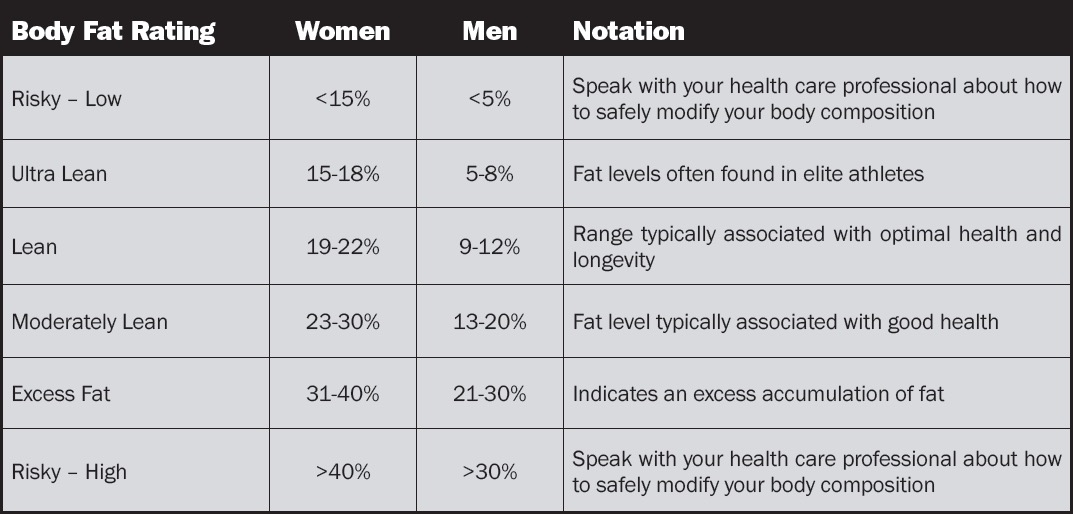Body composition has historically referred to the body’s relative amounts of lean tissue (muscle, bone, organs, and water) and fat tissue. This model subdivides body weight into two components: fat-free weight (the cumulative weight of all lean tissue) and fat weight (the weight of the remaining fat tissue).
Respecting that the human body is fundamentally made up of four elements, Inner Image explores body composition practicing a four component model. In so doing, body water, protein, mineral, and fat levels are all recognized. This methodology provides for greater clarity, while simultaneously breaking from the long held perspective that body composition and percent body fat are one and the same.
Percent body fat, the percentage of total weight represented by fat weight, has traditionally served as the preferred index used to evaluate human body composition. An accurate percent body fat will most certainly be detailed within your personal results, but please keep in mind this value is but a small piece of your in-depth Inner Image body composition experience.
WHAT DOES BODY COMPOSITION SIGNIFY?
Segmental Lean Analysis
Measures muscular development, and indicates balance among 5 key segments in your body. Can help determine predisposition to injury.
Fat Percentage
Body fat percentage based on overall body mass. Indicates lean vs. fat content and determines obesity.
Visceral Fat
Abdominal fat surrounding internal organs can indicate increased risk of cardiovascular disease, diabetes, cancer, and Alzheimer’s disease.
Intra- & Extra-
Cellular Water
Overall cellular health vs. dehydration and inflammation. These figures indicate nutrient retention in healthy cells.
More detail on the data provided during Body Composition Analysis is available here »
With regard to body fat, never lose sight of the fact that a certain amount of fat is absolutely necessary for good health. Fat plays an important role in providing energy, regulating hormones, and protecting internal organs. The minimal amount of essential fat is approximately 3-5% for men, and 12-15% for women. Generally speaking, men have optimal body fat levels when the percent of body fat is 15% or less, and are considered obese when the body fat percentage is 25% or higher. The optimal body fat level for women is 23% or less; women are considered obese when their body fat percentage is 33% or higher. Obesity is defined as an excessive accumulation of fat weight.
Below is a Body Fat Rating Chart which applies to adults ages 18 and older, based on information from the American College of Sports Medicine, the American Council on Exercise, and various scientific and epidemiological studies.

The accompanying two “Body Fat Curves For Children” charts published by the British Medical Journal provide body composition reference guidelines specific to girls and boys, ages 7 – 18:

